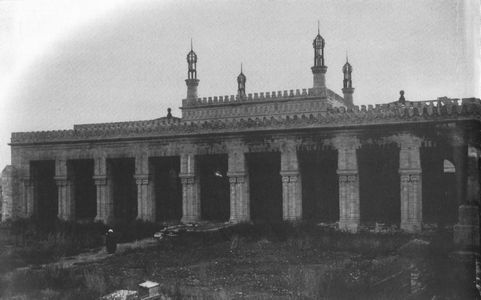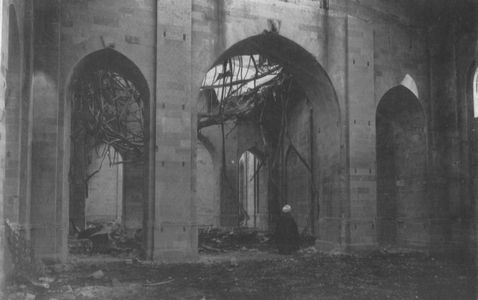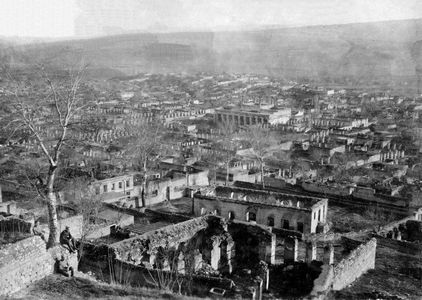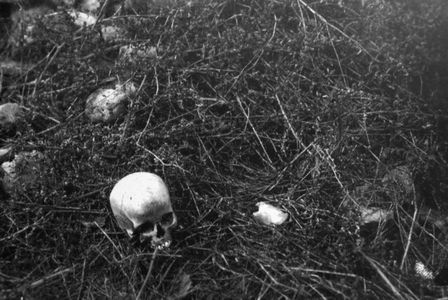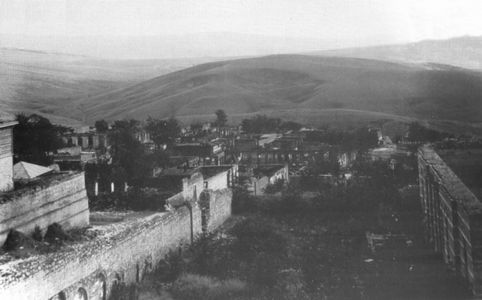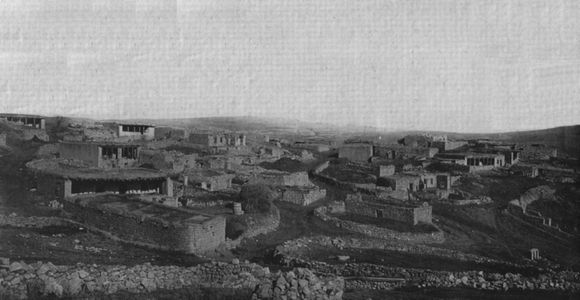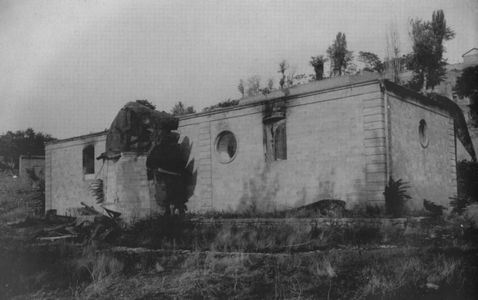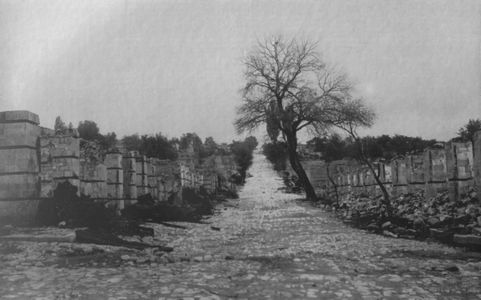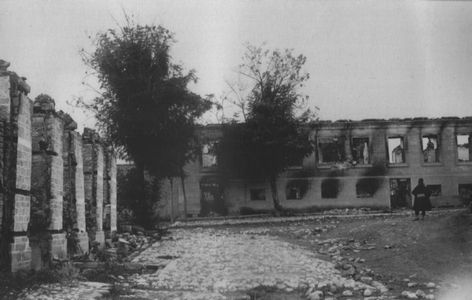Genocide of Azerbaijanis in Shamakhi in March of 1918
In early March 1918, the Armenians who lived in Shamakhi uyezd received the large number of armory and ammunition from the Bolsheviks government in Baku, and afterwards, arrived three thousand of Armenian troops armed with cannons and machine guns. Local Armenians were armed and grouped in detachments. In order to to calm Azerbaijanis, on March 15, on the initiative of the Armenian bishop Bagrat was held a meeting of the clergy of all nationalities in Shamakhi, who trusted in the vow that they would always live in peace and friendship with Azerbaijanis. Bagrat and the representative of the Molokans Karabanov trusted in the vow on the cross and Bible that they would never take up arms against the Azerbaijanis.
At dawn on March 18,1918, the Azerbaijani quarters of Shamakhi city were surrounded by Armenians from the south and Molokans from the northeast, and were forced under the pressure of cannonade and machine guns fire as well as rifle shooting. The attack was quite unexpected for the Muslims. The Azerbaijanis had no armed units, and were unprepared for the assault, attempted to defend themselves, and the forces were unequal.The Armenians began to loot and burn houses and slaughter innocent people. The houses which belonged to the wealthy and well-known Muslims, were put on fire. The Armenians and Molokans shot at men, women and children, running out of the burning houses.
There were heaps of corpses in the streets, they had undergone the cruelest tortures.Their breasts had been cut, abdoments had been torn.The corpses of the children were in the streets, they had been nailed alive on the ground. The property of Azerbajanis plundered in the houses by the Armenians was taken out in the van and carts to Armenians and Molokans villages.
The ferocities in Shamakhi continued for several days. When the Armenians heard of the approaching Azerbaijani armed units from Ganja, the Armenians and Molokans retreated to the village Gozluchay of Shamakhi uyezd. However, when from Baku arrived new Armenian-Bolsheviks detachments, armed with the latest armory, Azerbaijanis troops were forced to retreat with battles. A large part of residents left with them the city. In fact, there still remained in the city-the poor, the sick, the elderly. A few days later, the Armenians and Malokans gangs detachments again occupied Shamakhi. Azerbaijani women, the elderly and the children were killed in the city. As a result of the massacre, many corpses were in the streets, courtyards, mosques and houses.
Azerbaijan’s famous akhund Haji Jafarogulu was killed with particular cruelty. The Armenians first pulled his beard, fractured his teeth, gouged his eyes, and cut the ears and the nose. The Armenians also killed or burned alive many women and children who had taken refuge at akhund’s house. In summer 1918, the bodies of the victims in the city were gathered and buried, when Caucasian Islamic Army liberated Shamakhi. In October-November, 1918 the members of the Extraordinary Investigation Commission working in Shamakhi, in the prepared report noted, that they had found a lot of human bones in the courtyards and there still was the smell of scent of dead bodies in the city.
Slaughters, fires, robberies, during both attacks on Shamakhi were organized by prearranged plan of arrived Armenian - Bolshevik troops from Baku, as well as by local Armenians, who lived there for years and had always met the respect of Azerbaijanis.
Slaughters were realized with particular cruelty. So, the arms, legs, noses, ears were cut, eyes gouged out, abdoments were torn, and burned alive. The Armenians robbed the possessions of the Azerbaijanis from Shamakhi in the amount of over one billion rubles, all the houses which belonged to Azerbaijanis were burned. Furthermore, 13 mosques were burned, including “Juma Mosque” that had a historical significance.
The number of corpses in the city was impossible to calculate precisely, but according to official data on the number of people there were thousands of killed men, women and children.
Eighty-six villages of Shamakhi uyezd were also subject to treacherous and surprise attacks by the Armenians.
In the village of Angekharan 237 residents were torturously killed by the Armenians. People’s ears, noses, arms, and legs were torn apart, there were scorches on chests of many bodies, it was another evidence that fire on the victims chests made when they had still been alive. In the village of Navai were killed 995 Azerbaijanis, 555 men, 260 women, 140 children. In the village of Yahyali were killed 922 azerbajanis, 360 men, 412 women, 150 children.It should be noted, that the gross total in 53 villages of Shamakhi uyezd were killed more residents, 8,027 Azerbaijanis, 4,190 men, 2,560 women, 1, 277 children.
Furthermore, things such as houses, herds of cattle, fruit trees, vineyards, mulberry trees which the Armenians had not been able to take, were burned.
Therefore, the remains of alive population of Shamakhi and villages of Shamakhi uyezd left their settlements as the refugees and, afterwards, resettled in other regions of Azerbaijan.
